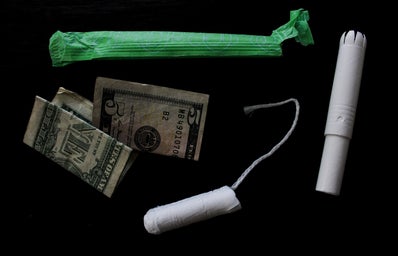Period Poverty is a public health crisis.
16.9 million people who menstruate in the US are living in poverty and 14.2 % of menstruating college people in the US had experienced period poverty in the past year. The numbers and statistics listed above are the shocking reality of our world, as the Journal of Global Health Reports stated.
Period poverty is the struggle women or anyone else who menstruates faces while trying to afford the cost of menstrual products. Period poverty goes beyond financial concerns; it can considerably impact physical and mental health. With no menstrual products accessible, those in period poverty will try alternative materials such as folded-up toilet paper or rags, however this can lead to skin irritation or infection. People facing period poverty often report facing mental health issues as well. It’s common for them to feel upset and ashamed when they can’t manage their periods as well as the next person, which ties into the stigma that periods are “gross” or “dirty.” These challenges, along with others, are all constant battles for those who face period poverty. This leads us to the question: how did period poverty become a public health crisis?
The “Tampon Tax” is one of the main contributors to period poverty, and a handful of solutions have been thrown out and proposed to combat this public health crisis. The tax burdens people who menstruate and makes the products crucial for everyday life unaffordable. As stated by Bridget J. Crawford in her law journal, The Unconstitutional Tampon Tax, “The average woman might spend between $704.86 and $2000.87 on tampons and pads alone (excluding any tax) throughout a lifetime. On top of that, a woman might pay from $20 to $145 for state taxes.” Being able to quantify this tax’s financial harm further shows the significance of how this tax affects those who menstruate. One proposed solution was to repeal and remove the Tampon Tax – this has already happened in 23 states. However, there are still 27 states that are not tax-free. That’s 27 states that still tax menstrual products as a luxury. If 23 states can adjust to going tax-free on these products, what’s holding back the other 27? By taking the step to repeal the Tampon Tax, we move one step further in creating menstrual equity and making these products more widely accessible to those who need them.
Repealing the “Tampon Tax” was just one of many other ways proposed to combat period poverty. Different ways to bring an end to this public health crisis are as follows:
- Normalizing conversations about periods. Holding and having these conversations about periods without shame is a huge factor in reducing shame or embarrassment about the topic, making it easier for those who menstruate to ask for help or questions about whatever may be pressing their thoughts.
- Supporting initiatives that promote menstruation product education. Groups that encourage and offer menstrual product education and advocacy play a considerable role in destigmatizing periods and working towards mitigating period poverty.
- Making menstrual products widely accessible. Some schools and businesses have already provided free menstrual products in bathrooms to whoever may need them. If this were a policy, access to menstrual products would be more widely available to those who need them. Toilet paper and menstrual products are both necessities – so why is toilet paper always provided and menstrual products are not?
Menstrual products are necessary for health and hygiene. The tampon tax and many other issues make it hard for people who face period poverty to access the products they need. We need to help create menstrual equity, mitigate period poverty, and make menstrual products widely available to whoever may need them. Periods are not a luxury, and people who menstruate should not struggle to access products that are a necessity.


